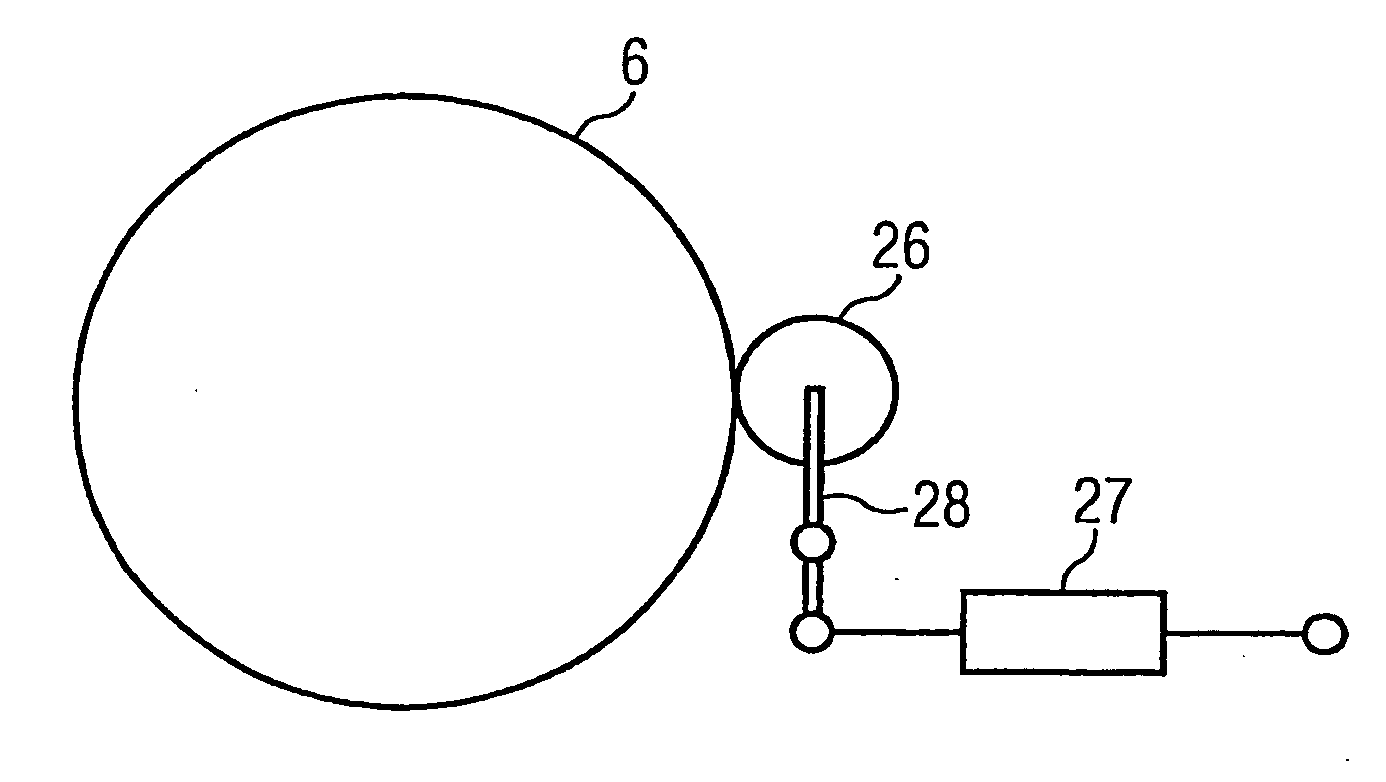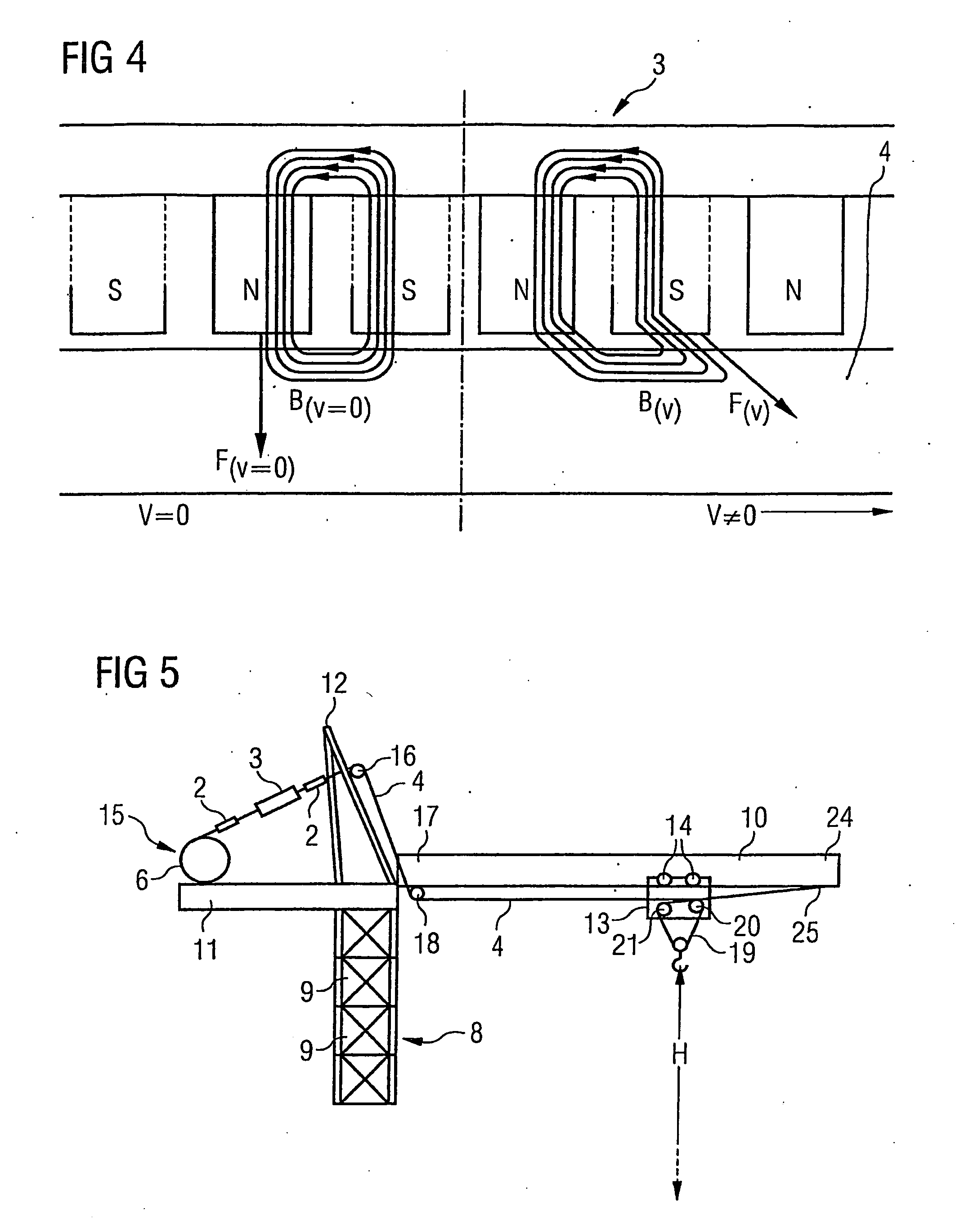Rope Winding System for Winding and Unwinding Steel Ropes of Cranes
a technology for winding systems and cranes, which is applied in the direction of magnets, hoisting equipments, magnetic bodies, etc., can solve the problems of high wear and tear of steel ropes, different load of rollers, and complex construction, and achieve the effect of facilitating uniform winding of steel ropes
- Summary
- Abstract
- Description
- Claims
- Application Information
AI Technical Summary
Benefits of technology
Problems solved by technology
Method used
Image
Examples
Embodiment Construction
[0033]FIG. 1 shows a side view of an apparatus for winding up a steel rope onto a rope drum 6 of the conventional type, which uses a pressure roller 26 to generate a rope load. Pressure roller 26 is linked to a hydraulic cylinder 27 via a lever 28. Pressure roller 26 serves to lay the steel rope and should prohibit a lift-off the rope at slack rope problems.
[0034]FIG. 2 shows, in a side view, a rope winding system 1 according to the present invention. To generate a rope load on steel rope 4, a magnetic system 3 in the form of an eddy current brake is used. When rope drum 6 winds up steel rope 4, an electric current is supplied to eddy current brake 3 and steel rope 4 is braked by the magnetic field which is deflected by the movement of steel rope 4 through the magnetic field. In front of eddy current brake 3, a pair of opposed guiding pulleys 2 is arranged, which guide steel rope 4 into the magnetic field of eddy current brake 3. After it has passed through eddy current brake 3, st...
PUM
 Login to View More
Login to View More Abstract
Description
Claims
Application Information
 Login to View More
Login to View More - R&D
- Intellectual Property
- Life Sciences
- Materials
- Tech Scout
- Unparalleled Data Quality
- Higher Quality Content
- 60% Fewer Hallucinations
Browse by: Latest US Patents, China's latest patents, Technical Efficacy Thesaurus, Application Domain, Technology Topic, Popular Technical Reports.
© 2025 PatSnap. All rights reserved.Legal|Privacy policy|Modern Slavery Act Transparency Statement|Sitemap|About US| Contact US: help@patsnap.com



